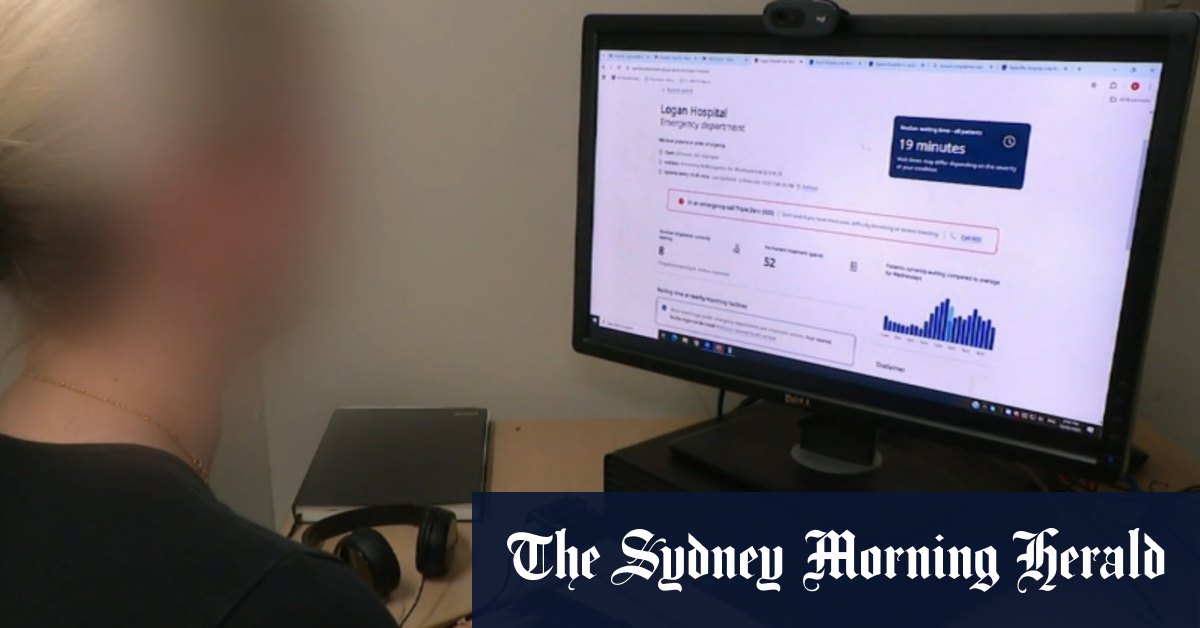Australia
Concerns over Queensland’s real-time health data

Introduction
The Queensland government has recently introduced a new real-time health data system, aimed at improving healthcare delivery and responsiveness. However, this initiative has sparked a wave of concerns among healthcare professionals, privacy advocates, and the general public. The system, which collects and processes health data in real-time, has been touted as a tool to enhance decision-making and resource allocation. However, critics argue that the potential risks and challenges associated with this system far outweigh its benefits, at least in its current form. This summary will explore the key concerns surrounding Queensland’s real-time health data system, including transparency, privacy, accuracy, and the potential for misuse of data.
Lack of Transparency in Data Collection and Usage
One of the primary concerns regarding Queensland’s real-time health data system is the lack of transparency in how data is collected, stored, and used. Many individuals are unaware of the extent to which their health data is being monitored and shared in real-time. This lack of clarity has led to fears that personal health information could be accessed by unauthorized parties or used for purposes beyond the original intent. For instance, there are concerns that insurance companies or employers could gain access to sensitive health data, potentially leading to discrimination or targeted marketing. The Queensland government has not provided sufficient details about the safeguards in place to prevent such misuse, further fueling public skepticism. Without clear guidelines and oversight, the system risks eroding trust between patients and healthcare providers, which is essential for effective healthcare delivery.
Privacy Concerns and Potential Data Breaches
The implementation of real-time health data systems raises significant privacy concerns. Health data is some of the most sensitive information about an individual, and the potential for data breaches or unauthorized access is a constant threat. While the Queensland government has assured the public that robust security measures are in place, history has shown that even the most secure systems can be vulnerable to cyberattacks. A breach of real-time health data could have severe consequences, including identity theft, medical fraud, and reputational damage for individuals. Additionally, the real-time nature of the data means that any breach could be detected later, potentially after significant harm has already been done. These risks highlight the need for stricter data protection laws and greater accountability for organizations handling health data. Until these measures are implemented, the privacy of Queensland residents will remain at risk.
Questionable Accuracy and Reliability of Real-Time Data
Another critical issue with Queensland’s real-time health data system is the accuracy and reliability of the data being collected. Real-time data systems rely on continuous input from various sources, including hospitals, clinics, and other healthcare facilities. However, if the data being entered is incomplete, outdated, or incorrect, the system’s outputs will be similarly flawed. This could lead to misguided decision-making, such as misallocating resources or implementing ineffective health policies. For example, if the system reports a surge in cases of a particular illness, but the data is inaccurate, it could result in unnecessary panic or the misdirection of medical supplies. Ensuring the accuracy of real-time data requires rigorous quality control measures, including regular audits and training for healthcare staff. Without these assurances, the system’s effectiveness and reliability are questionable.
Ethical Concerns and Potential for Misuse
The ethical implications of Queensland’s real-time health data system cannot be overlooked. There are concerns that the system could be used to disproportionately monitor certain populations, such as low-income communities or marginalized groups. This could exacerbate existing health disparities by focusing resources on areas that are already well-served, while neglecting those that are most in need. Additionally, there is the potential for the system to be used for purposes beyond public health, such as law enforcement or immigration control. For instance, real-time health data could be used to track individuals or identify those with certain conditions, raising serious ethical and legal questions. The Queensland government must address these concerns by establishing clear ethical guidelines and ensuring that the system is used solely for its intended purpose of improving healthcare outcomes.
The Need for Patient-Centered Design and Involvement
A key criticism of Queensland’s real-time health data system is the lack of patient-centered design and involvement in its development. Patients have a right to know how their data is being used and to have a say in the decisions that affect their care. However, many individuals feel that their voices have been excluded from the conversation about this system. This lack of involvement has led to a sense of disempowerment and mistrust among patients, who may feel that their autonomy and privacy are being compromised. To address these concerns, the Queensland government should engage in meaningful consultations with patients, healthcare providers, and other stakeholders to ensure that the system is designed with their needs and concerns in mind. By prioritizing patient-centered design, the government can build trust and ensure that the system truly serves the interests of those it is intended to help.
Conclusion
The introduction of Queensland’s real-time health data system has sparked important discussions about transparency, privacy, accuracy, ethics, and patient involvement in healthcare. While the system has the potential to improve healthcare delivery and responsiveness, the concerns surrounding its implementation cannot be ignored. Addressing these issues will require a concerted effort from the Queensland government, healthcare providers, and the broader community. By prioritizing transparency, privacy, and patient-centered design, Queensland can ensure that its real-time health data system is a tool for good, rather than a source of fear and mistrust. The success of this initiative will depend on the government’s ability to listen to concerns, implement safeguards, and demonstrate a commitment to ethical and responsible data use. Only then can the system fulfill its promise of improving healthcare outcomes for all Queensland residents.